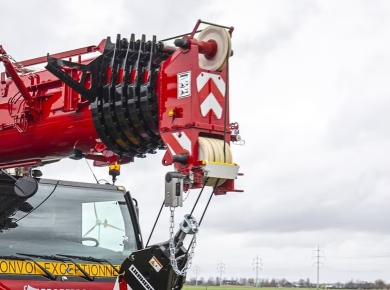The moment I stepped onto the construction site, I felt the weight of responsibility. Every decision, every piece of equipment, and every safety barrier was a crucial element in protecting the workforce. Yet, I couldn’t shake the feeling that many of the safety barriers we installed were nothing more than decorative elements—often ignored or inadequately utilized. It’s a common scenario across the industry. While these barriers are meant to protect, they frequently fall short, leading to increased risk and safety violations. It’s time to shift our thinking on safety barriers, understanding their true purpose and ensuring they are not just for show.
Understanding the Purpose of Safety Barriers
Safety barriers are designed to prevent accidents, protect workers, and define boundaries on construction sites. However, many professionals treat them as mere accessories rather than essential safety tools. These barriers can take many forms, such as guardrails, safety nets, or even simple cones. Yet, their effectiveness hinges on proper implementation and maintenance.
The Real Cost of Neglect
When safety barriers are viewed as decorative rather than functional, the consequences can be dire. I remember a project where a poorly placed safety fence led to a near-miss incident. A worker tripped over a loose cable because the barrier didn’t adequately delineate the hazardous area. The incident could have been easily avoided with proper placement and maintenance of the barrier. The financial implications of workplace accidents, including medical expenses and lost productivity, can be staggering. Investing in effective safety barriers is not just about compliance; it’s about safeguarding lives and your bottom line.
Common Pitfalls in Barrier Implementation
Many professionals fall into the trap of assuming that once a safety barrier is installed, the job is done. This mindset can lead to several pitfalls that compromise safety.
Inadequate Training
If workers aren’t trained to recognize and respect safety barriers, their presence becomes futile. During a site visit, I noticed several workers casually walking through a designated no-go zone because they hadn’t been educated on the importance of the barriers. Comprehensive training programs should include information on the purpose of each barrier, proper use, and the consequences of ignoring them.
Improper Maintenance
Safety barriers demand ongoing attention. Weather conditions, wear and tear, and site changes can all affect their integrity. A forgotten or damaged barrier loses its effectiveness. Regular inspections and maintenance checks are fundamental. Establish a routine to assess barriers and replace or repair them as needed. This proactive approach not only adheres to compliance standards but also fosters a culture of safety.
Choosing the Right Barriers for Your Site
Not all barriers are created equal, and selecting the appropriate type for your specific environment is crucial.
Evaluating Site Conditions
Take a moment to analyze the unique hazards present on your site. Are there elevated platforms? Are there areas where heavy machinery operates? Understanding these conditions will guide your choice of barriers. For instance, if you’re dealing with a site that has frequent vehicle movement, robust barricades are a must.
Investing in Quality Materials
It’s tempting to cut costs by purchasing cheaper barriers, but quality should never be compromised. Low-grade materials are more likely to fail, putting workers at risk. Invest in barriers that meet safety standards and are designed for the conditions they will face. This investment pays off in the long run, both in terms of safety and durability.
Creating a Culture of Safety Awareness
Implementing effective safety barriers is just one piece of the puzzle. A culture of safety awareness throughout the team is equally vital for ensuring compliance and reducing risk.
Encouraging Open Communication
Fostering an environment where workers feel comfortable voicing concerns about safety barriers or any other issues is crucial. Encourage team meetings focused on safety, where workers can share experiences and discuss potential improvements. This dialogue not only helps identify weaknesses in your safety plan but also empowers workers to take ownership of their safety.
Recognizing and Rewarding Compliance
Motivation can make a significant difference in how workers perceive safety measures. Implement a system that recognizes and rewards compliance with safety protocols. This could be as simple as a shout-out during team meetings or a more structured incentive program. When workers see that safety is valued and rewarded, they are more likely to adhere to protocols, including respecting barriers.
Conclusion: Moving Beyond Decoration
The journey from viewing safety barriers as mere decorations to understanding their vital role in workplace safety is an essential one. By prioritizing proper training, maintenance, and communication, we can transform these barriers into effective tools that protect our most valuable asset—our workforce. It’s time to challenge the status quo and ensure that safety barriers are not just an afterthought but a fundamental aspect of our safety strategy. Let’s commit to making our sites safer, one barrier at a time.


